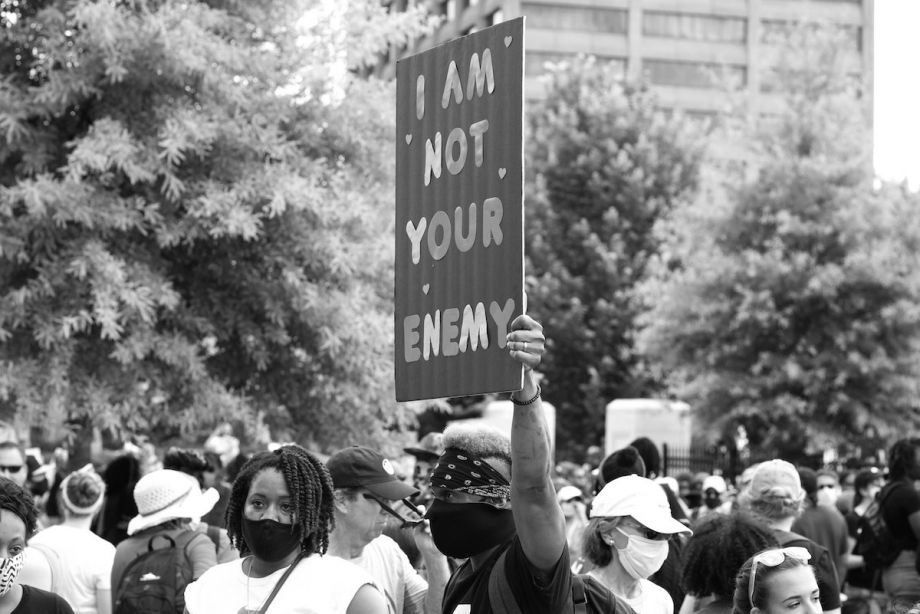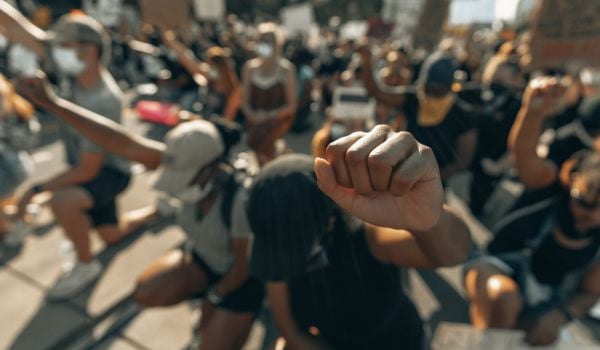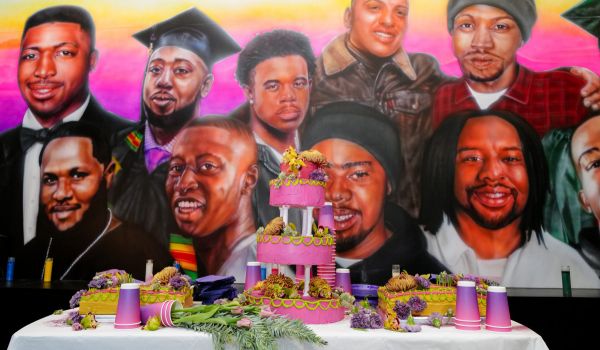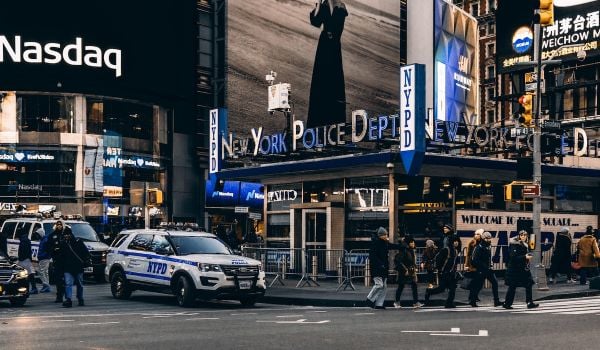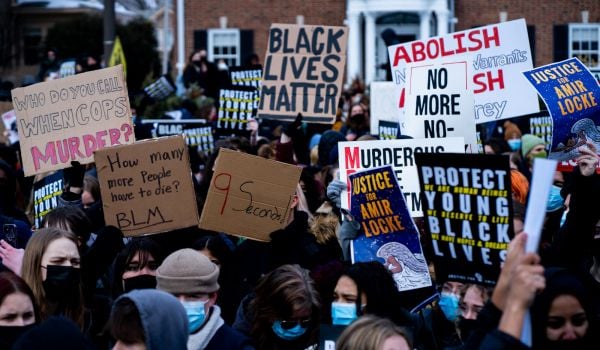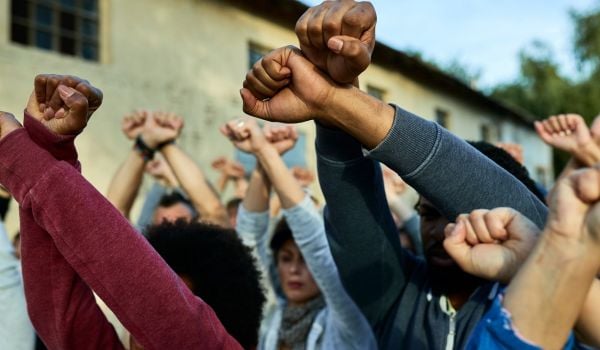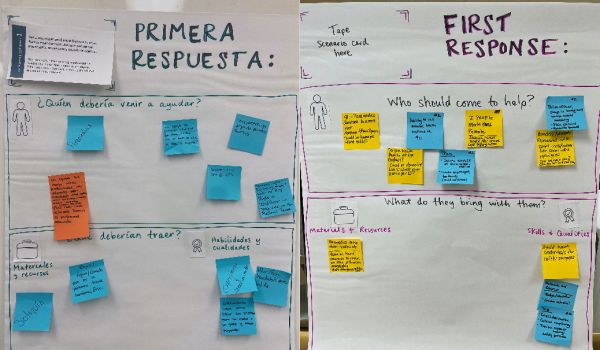This article was originally published on Vital City.
Isaiah Hall doesn’t think he’ll ever call the police.
In the summer of 2018, he had just turned 17. During one particularly hot day, he was walking home from the store to his family’s Brownsville apartment. A few blocks away from his front door, he was confronted by a group of teens.
He knew of these guys from around the neighborhood, but they weren’t his friends. And they looked like they had an agenda, that they wanted something from him. They told Isaiah they were looking for a friend of his. “I don’t know where he’s at,” Hall told them.
They pressed him and kept asking. It was clear they had some problem with this friend that they wanted to settle. Hall truly didn’t know where he was — and, he told me, even if he did, he wouldn’t have told them. “I don’t get down like that,” he says.
Then one of them pulled out a gun.
Hall remained calm. He just put his hands up and said, “It’s all good, y’all got it.” He didn’t expect them to actually shoot him at that moment. It was the middle of a summer day and they weren’t in some desolate part of the neighborhood. Still, you never know what people are willing to do.
Eventually, they let him walk away.
Relieved, Hall was down the block from his apartment when an officer approached him. He was confused when the cop asked to speak with him. He told Hall that he had seen the entire exchange. That perplexed the young man.
“Why didn’t you step in or something?” Hall asked.
“I ain’t trying to get shot,” the cop told him.
“What?” Hall thought to himself. He told the cop he was supposed to do something in that kind of situation.
“Fine, are you in a gang?” The cop asked him.
“I ain’t in a gang,” Hall said back.
The cop said there was no way these guys would be ready to shoot him if he wasn’t in a gang.
By this point, Hall was done with the conversation and went into his apartment. The cop didn’t make much of an attempt to get more information.
“They must be training these dudes the wrong way, because they ask the wrong questions,” Hall told me.
This interaction, versions of which many other young Black men can relate in their own words, touches on a complex issue within the unrelenting gun violence that’s plaguing poor neighborhoods where people of color live: the dynamic between law enforcement and community members. Talk to people who live in these neighborhoods and they’ll tell you that dynamic isn’t good. The adversarial nature of the relationship hinders police departments’ abilities to solve gun crimes — because without cooperation from witnesses, cops typically have no way to make a case.
There are plenty of driving factors behind the problem. The historical context of policing in Black America is part of it. The controversial killings at the hands of the police don’t help. Sometimes the fallout from those is isolated to the city where they happened, and sometimes they affect the entire country, as happened after the murder of George Floyd.
Then there are other roadblocks that keep the police from solving gun crimes: a lack of evidence, shortages in proficient investigators, and witnesses who won’t come forward or who change their stories. All of this creates a deep suspicion in neighborhoods of color and makes people feel estranged from the police. Not to mention, people can put themselves in danger by speaking to the cops.
It’s a cycle. A lack of witnesses creates a lack of trust, which leads to a greater lack of witnesses.
“You got a lot of people in the hood who say, ‘We have 20 unsolved homicides and you want me to help solve this one?’” says Paul Carrillo, the vice president for violence intervention at the Giffords Law Center to Prevent Gun Violence. “When people see that the police aren’t solving anything, they lose faith in them.”
An entire neighborhood could know who a shooter is — but when the police can’t arrest them, that’s frustrating.
“That’ll make folks want to pick up a gun and seek justice,” Carrillo says.
But do the law-abiding citizens who go about their day really need to have a strong reciprocal relationship with the police in order for the police to work effectively on their behalf? Do the kids who just play at the park and go back home when their parents tell them need to be friendly with cops in order to feel protected by them? That shouldn’t be a prerequisite.
Put another way, the problem is less about the weakness of police-community bonds — and more about poor police responsiveness to the daily concerns of many residents of predominantly Black communities. Far too often, everyday residents and civilians feel ignored by the police.
Thomas Edwards has lived in New York City, in Crown Heights and the Bronx, since the late 60s. He spent a lot of time in the streets before he went to prison. He’s now part of an advocacy group that helps recently incarcerated people. He’s well versed in how law enforcement has operated over the past 50 years.
“The cops tend to see all people in these communities as adversaries,” Edwards says. “The police absolutely need to be in these neighborhoods, but their approach creates conflict.”
That conflict can be found in every hood across the country. Tamar Manasseh runs an anti-violence organization in Chicago called Mothers/Men Against Senseless Killings (MASK). She’s been on the front lines of the gun violence problem in Chicago since 2015. She’s seen it all, especially how the police deal with all the shootings.
“There are millions of examples where people like myself call the police and tell them about guys that are shooting and killing and it goes nowhere,” Manasseh says. “They say ‘yeah okay we’ll look into it,’ but nothing happens. Meanwhile, we’re putting our life on the lines by talking to them.”
In 2021, four men on the South Side of Chicago went on a crime spree when they tried to rob an ATM truck and killed a guard. Then two of them shot and killed their accomplices before the police caught up with them.
Manasseh says she warned the police about these men for years.
“I’m telling the police these are the guys doing the killings. They make videos about it, they got the guns and they’ll tell you who they killed in the video,” she says. “As long as young Black kids are killing other young Black kids, the police don’t give a damn about it.”
That same year, on the outskirts of Atlanta, Davante Griffin was the victim of a home invasion where he and a friend were shot. When he got to the hospital, he says the police asked him the same question over and over: “Why did they break into your house?”
“I told them ‘I don’t know,’ but they thought I was lying,” he says.
“Why would they randomly pick your house?” Davante remembers one of the cops asking.
“Do you not understand that dudes be doing that?” Davante asked them right back. He felt like they were treating him like a criminal. “When they think you’re a criminal they act like you deserve what happened to you,” he says.
These types of anecdotes can be found in any city, and what they do is create narratives around policing — narratives that cops treat particular populations, the vast majority of whom are law-abiding, with blanket suspicion and distrust. The narratives might not always be 100% accurate, but they exist, they grow, and they hinder effective policing.
“The narrative is a powerful thing, sometimes optics outweigh the facts and sometimes people don’t care what the facts are,” Carrillo says.
So what do the police need to do? Aside from all the proactive and retroactive investigative actions that are crucial to addressing public safety, they need to work a lot harder to listen to people and treat them like individuals. When residents tell them things, they should strive to truly hear them and learn from them. No one is saying they have to believe everything that they’re being told, but put a little more faith in the everyday citizens who are potentially risking their lives to speak to the authorities.
It’s not just the residents who call for this. Law enforcement has stressed the importance of respecting civilians for decades.
“To build this trust for an effective community partnership police must treat people with respect and sensitivity,” a 1994 report by the U.S. Department of Justice Bureau of Justice Assistance says. “The use of unnecessary force and arrogance, aloofness, or rudeness at any level of the agency will dampen the willingness of community members to ally themselves with the police.” This isn’t anything new.
A study that criminologist David Weisburd co-authored in 2022, titled “Reforming the police through procedural justice training: A multicity randomized trial at crime hot spots,” makes this point in another way. Procedural justice explores the way police officers and other legal officials interact with the public. If residents believe that the police are doing their work fairly and respectfully, then that can have a positive impact on public safety.
“Our findings suggest that police can be effectively trained to use procedural justice in crime hot spots and that this training can impact their attitudes and behavior, citizen perceptions of interactions, community perceptions of police misbehavior, and crime. These findings reinforce that police fairness and effectiveness are not competing goals,” the study says.
“It’s not even about building a relationship, it’s about listening to people and treating them like people,” Griffin says. “Building a relationship is great, but you gotta listen first.”
Josiah Bates is an enterprise reporter at The Grio. His first book, “In These Streets: Reporting from the Front Lines of Inner-City Gun Violence,” will be published in May 2024.

